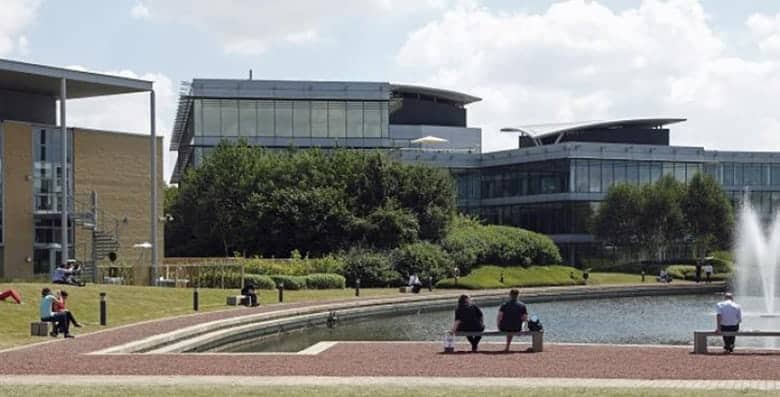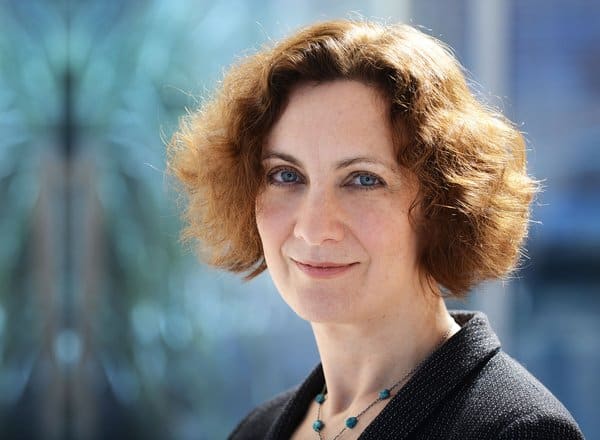
Oxford Science Park is set to get much bigger
Singapore’s GIC has acquired a 40 percent stake in a life sciences park near the University of Oxford as part of a newly-announced strategic partnership between the $744 billion sovereign wealth fund and the university’s Magdalen College.
The more than 500-year-old unit of the UK’s best-known university said that the partnership, which aligns with an initiative to add 348,000 square feet (32,3330 square metres) of lab and office space to Oxford Science Park, is an opportunity to support innovation and entrepreneurship while ensuring a secure future for the school.
“Magdalen has spent the last year of pandemic disruption developing a clear strategic direction for the next decade and beyond,” college president Dinah Rose said Monday in a release, which noted that the new joint venture with GIC would enable the rapid development of the park.
The Financial Times reported that GIC paid £160 million for its stake, with Magdalen College retaining its majority interest, as the COVID-19 crisis stokes investor enthusiasm for life sciences assets. A GIC representative told Mingtiandi that the fund had no comment on the transaction.
Space for Vaccines and Genes
Oxford Science Park is currently home to 130 companies employing over 2,700 life sciences and technology professionals. Businesses in the research hub include Vaccitech, co-founded by Magdalen alumnus Adrian Hill, who helped create the Oxford-AstraZeneca COVID vaccine; and Oxford Nanopore, developer of genome sequencing technology that can decode the DNA and RNA of any living organism.

Magdalen College head Dinah Rose
Situated four miles (6.4 kilometres) from Oxford city centre, the science park was set up by Magdalen College in 1991 and had been wholly owned by the college since 2016, when it bought out M&G Real Estate’s 50 percent stake in the venture for £18.1 million (now $24.6 million).
In a May announcement, Cushman & Wakefield said Magdalen was seeking to sell a 40 percent stake in the park, which would include existing buildings and remaining development plots. The park has 250,000 square feet (23,226 square metres) of existing leased and managed buildings, the property services firm said, with 14.75 acres (6 hectares) of development land to support a further 420,000 square feet.
In August, the Estates Gazette reported that the Oxford Science Park was seeking permission to add 348,000 square feet of lab and office space, including a three-storey building of 68,000 square feet and buildings of four and five storeys totalling nearly 280,000 square feet.
Life Labs Thriving
With yields from office and logistics assets facing ongoing compression as investors continue to pursue alternative asset strategies, life sciences has become a favoured theme in the UK.
British Land announced in August that it had agreed to purchase Peterhouse Technology Park in Cambridge from LaSalle Investment Management for £75 million, representing a net initial yield of 4.15 percent for the life sciences asset.
In the same announcement, the LSE-listed REIT said it had agreed to acquire The Priestley Centre, a life sciences building in the Surrey Research Park near London, for £12 million.
In February, property consultancy JLL estimated that up to £15 billion in capital had been allocated to UK life sciences real estate, with less than 10 percent of that cache deployed to date.
Science Projects
GIC has shown a willingness to make big bets on life sciences initiatives at home and abroad in recent months, as well as a growing interest in UK commercial assets.
In May, the Business Times reported that GIC contributed to the $200 million Series A funding round of Singapore-based Esco Lifesciences, a supplier of life sciences tools for the healthcare industry.
Last November, New York-listed Ventas, a healthcare REIT, announced a joint venture with GIC to develop “research and innovation” properties based at US universities. The JV’s initial assets are four development projects with total costs estimated at $930 million, including facilities in Philadelphia, Pittsburgh and Arizona.
“As a long-term investor, we are confident that the life sciences sector will continue to flourish, driven by the growing and ageing global population, as well as increased public and private funding for life sciences R&D,” Lee Kok Sun, GIC’s chief investment officer of real estate, said in November.
In addition to the Oxford Science Park investment, the UK’s React News reported in August that GIC was in talks with British Land to purchase a 75 percent stake in the REIT’s London headquarters at Paddington Central for £1.1 billion.
Note: This article have been indexed to our site. We do not claim legitimacy, ownership or copyright of any of the content above. To see the article at original source Click Here
















